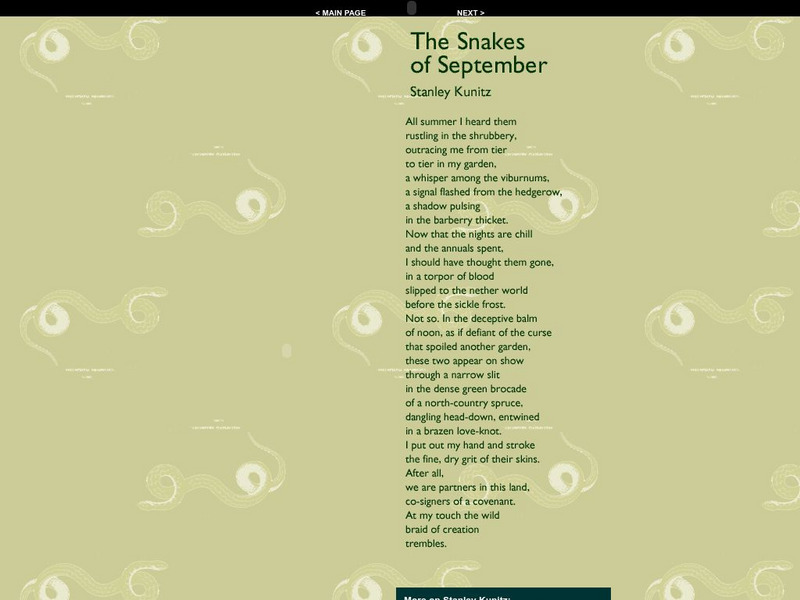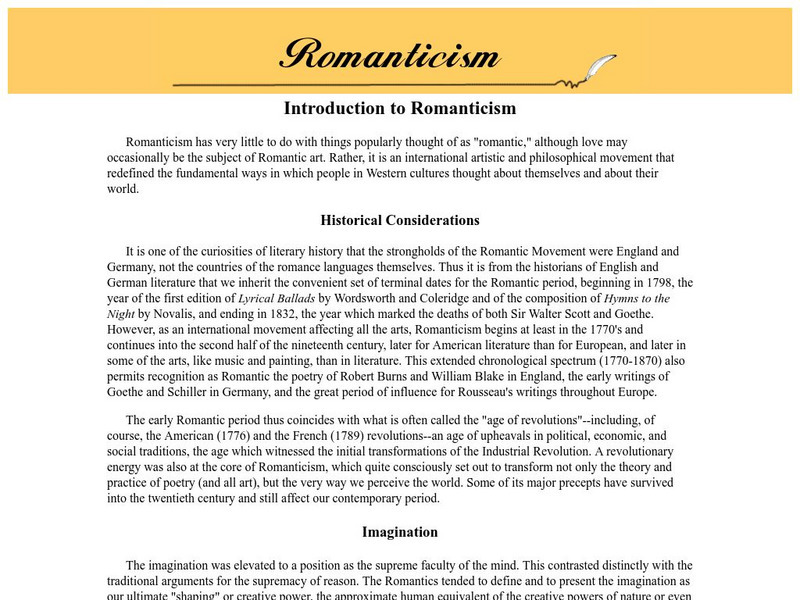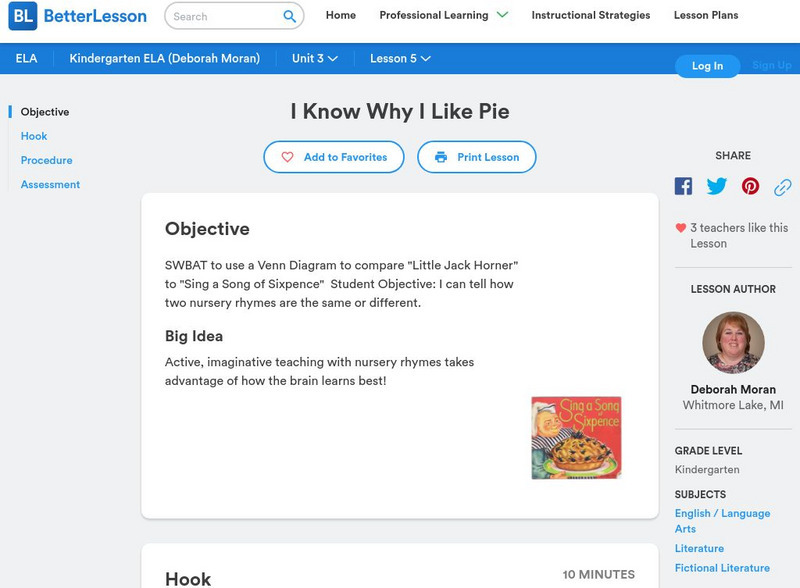Hi, what do you want to do?
SMART Technologies
Smart: Poetry Games
Students will use this interactive exercise to play with words to strengthen their imaginations and their enjoyment of poetry in this SMART whiteboard activity.
British Library
British Library: Tennyson's the Charge of the Light Brigade: A Close Reading
In this activity, students will consider the context within which Alfred Lord Tennyson wrote 'The Charge of the Light Brigade'. The poem immediately captured the public imagination, where it has remained, testimony to heroic failure,...
American Museum of Natural History
American Museum of Natural History: Imagine Nature: Kunitz: Snakes of September
Text of Stanley Kunitz's "The Snakes of September" with links to an audio recording of the poem read by the author and to an interview with the poet about his experience as America's poet laureate, among other things.
Varsity Tutors
Varsity Tutors: Web English Teacher: John Donne
This online resource focuses on the life and work of John Donne. Includes links to related sources.
City University of New York
Brooklyn College: Melani: Romanticism: Introduction to Romanticism
This is an article discribing Romanticism and the Romantic Period from 1798-1832 including its beginning with the publication of Lyrical Ballads by Wordsworth and Coleridge. Characteristics include heightened imagination, nature...
ReadWriteThink
Read Write Think: Responding to Gwendolyn Brooks' "We Real Cool"
Contains plans for five lessons based off Gwendolyn Brooks? ?We Real Cool? where young scholars imagine they are the characters in the poem fifty years later. In addition to objectives and standards, this instructional plan contains...
Better Lesson
Better Lesson: I Know Why I Like Pie
Active, imaginative teaching with nursery rhymes takes advantage of how the brain learns best! In this lesson plan, students will use a Venn Diagram to compare "Little Jack Horner" to "Sing a Song of Sixpence"
Albright-Knox Art Gallery
Albright Knox Art Gallery: Kinetic Art Mobiles
Alexander Calder invented two new kinds of sculpture: mobiles and stabiles. In The Cone, he combines elements of each-a stabile, or non-moving sculpture, connected to a mobile, or moving sculpture. In this instructional activity,...










